
 Copyright 2020 by Marne Ventura All rights reserved. No part of this book may be reproduced in any manner without the express written consent of the publisher, except in the case of brief excerpts in critical reviews or articles. All inquiries should be addressed to Sky Pony Press, 307 West 36th Street, 11th Floor, New York, NY 10018. Sky Pony Press books may be purchased in bulk at special discounts for sales promotion, corporate gifts, fund-raising, or educational purposes. Special editions can also be created to specifi cations. For details, contact the Special Sales Department, Sky Pony Press, 307 West 36th Street, 11th Floor, New York, NY 10018 or .
Copyright 2020 by Marne Ventura All rights reserved. No part of this book may be reproduced in any manner without the express written consent of the publisher, except in the case of brief excerpts in critical reviews or articles. All inquiries should be addressed to Sky Pony Press, 307 West 36th Street, 11th Floor, New York, NY 10018. Sky Pony Press books may be purchased in bulk at special discounts for sales promotion, corporate gifts, fund-raising, or educational purposes. Special editions can also be created to specifi cations. For details, contact the Special Sales Department, Sky Pony Press, 307 West 36th Street, 11th Floor, New York, NY 10018 or .
Sky Pony is a registered trademark of Skyhorse Publishing, Inc., a Delaware corporation. Visit our website at www.skyponypress.com. 10 9 8 7 6 5 4 3 2 1 Manufactured in China, 2020 This product conforms to CPSIA 2008 Library of Congress Cataloging-in-Publication Data is available on file. Cover design by Tom Lau Cover photographs by Getty Images Print ISBN: 978-1-5107-5700-4 Ebook ISBN: 978-1-5107-6047-9 Printed in China 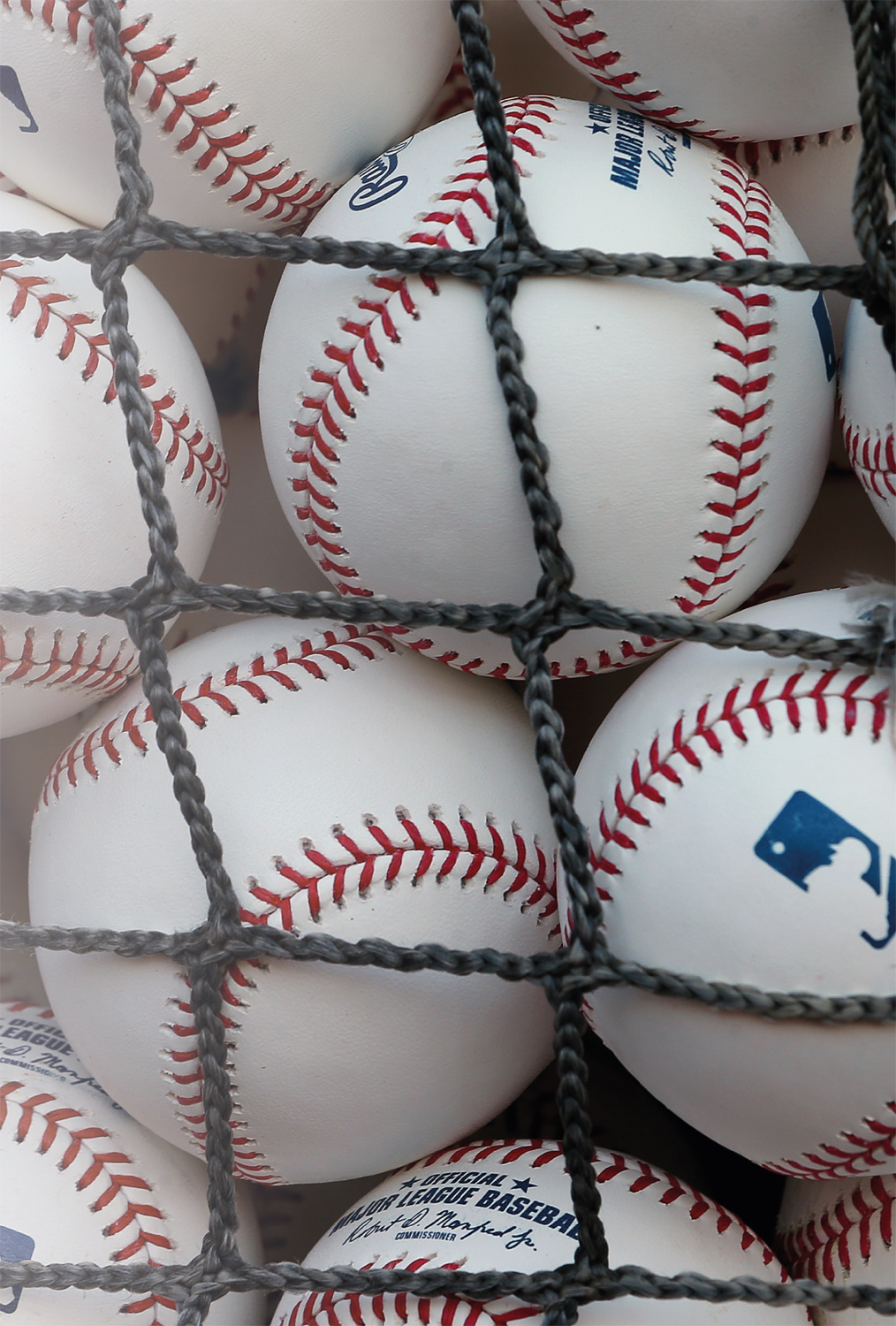 Table of Contents
Table of Contents  Introduction: Play Ball! Its a sunny day at the ballpark. Fans sit side-by-side on the bleachers. On the field, the bases are loaded.
Introduction: Play Ball! Its a sunny day at the ballpark. Fans sit side-by-side on the bleachers. On the field, the bases are loaded.
The pitcher looks at each base from the mound. He nods to the catcher, winds up, and throws. The batter swings. WHACK! The ball soars across the field. The crowd jumps up and cheers as popcorn and sodas spill to the ground. Its a grand slam! Americans have been playing organized baseball since 1846.
Professionals, amateurs, and little leaguers play. Families play during picnics in the park. Neighborhood kids play in the schoolyard. Co-workers form teams and play on weekends. The first World Series was held in 1903. Every year, the American League and the National League compete to win the best of seven games.
An average of nearly 14 million fans watch the games. Do you love baseball? Then you love science, technology, engineering, and math (STEM) too! Baseball is STEM in action. Science explains every pitch and swing. Athletes and fans use technology to improve their performance and enjoy the sport. Engineers find ways to keep players safe with new helmets and gloves. 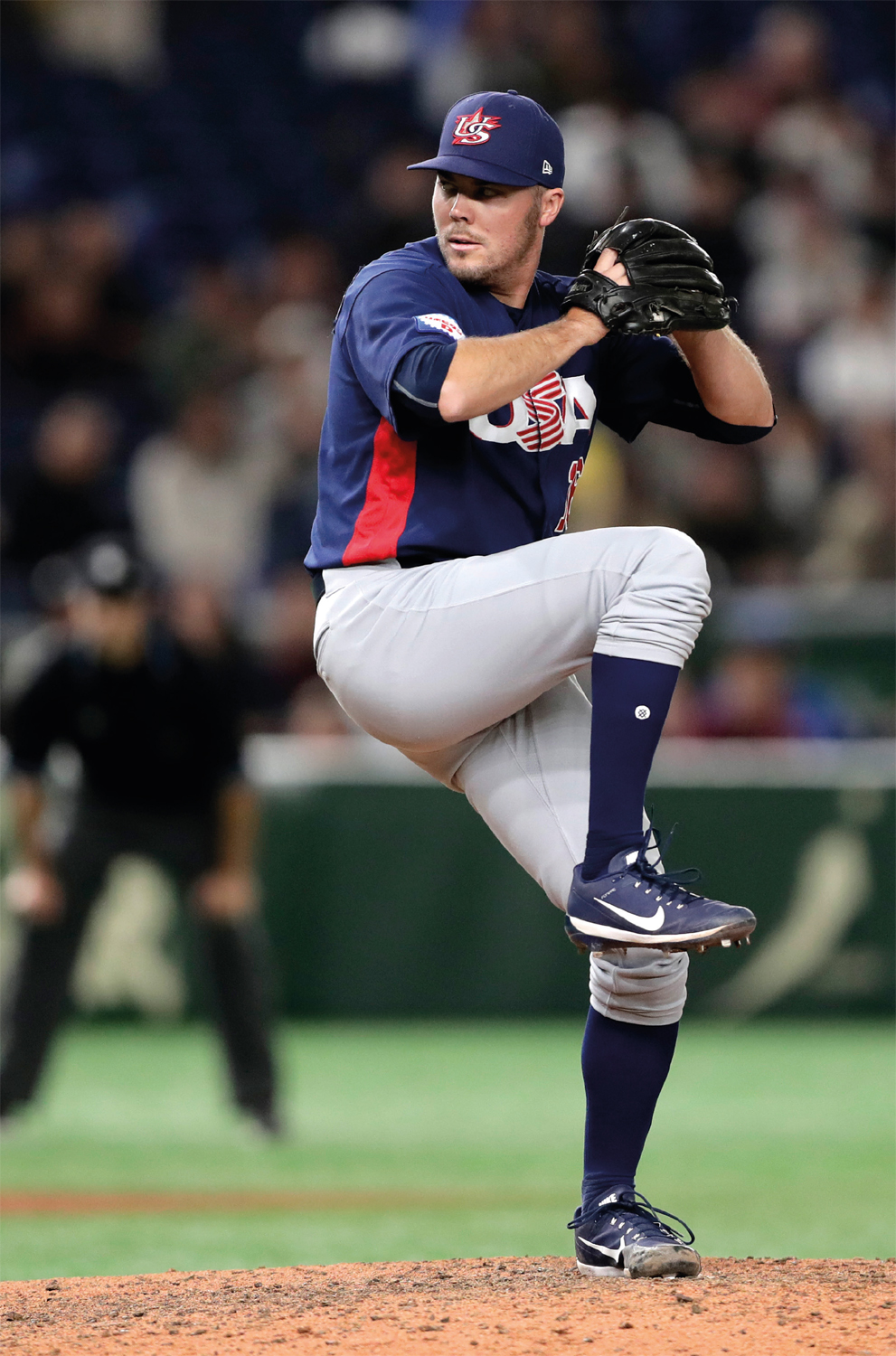 Chapter One The Stunning Science Behind the Sport Why do pitchers wind up? Whats that crazy dance before the pitch? Why not just throw the ball? Pitchers want the ball to be difficult to hit.
Chapter One The Stunning Science Behind the Sport Why do pitchers wind up? Whats that crazy dance before the pitch? Why not just throw the ball? Pitchers want the ball to be difficult to hit.  Chapter One The Stunning Science Behind the Sport Why do pitchers wind up? Whats that crazy dance before the pitch? Why not just throw the ball? Pitchers want the ball to be difficult to hit.
Chapter One The Stunning Science Behind the Sport Why do pitchers wind up? Whats that crazy dance before the pitch? Why not just throw the ball? Pitchers want the ball to be difficult to hit.
A really fast ball achieves this goal. How do they do it? Physics! Physics is the science of energy and objects in motion. Newtons Three Laws of Motion explain the way objects move. The first law states that every object will remain at rest or in motion in a straight line until acted upon by an outside force. The second law explains how the speed and direction of an object change when acted upon by an outside force. The third law states that for every action or force in nature, there is an equal and opposite reaction.
According to the Second Law of Motion, the more force is put on an object, the faster it will move. The strength or force gained by motion is called momentum . Sir Isaac Newton Sir Isaac Newton (16421727) was an English scientist and mathematician. His Three Laws of Motion became the basis for modern physics. Newton also explained gravity, the force that causes things like baseballs to fall toward the earth.  How does a curveball curve? Pitchers can make baseballs move in surprising ways.
How does a curveball curve? Pitchers can make baseballs move in surprising ways.
A curveball looks like its speeding right over home plate. Then it suddenly drops and moves to one side. Pitchers throw curveballs to trick batters into swinging and missing. As soon as the ball leaves the pitchers hand, the forces of nature affect its movement. Earths gravity pulls it downward. Earths air also has an effect on the ball.
Air is made up of invisible gas molecules . When these molecules hit the ball, they create friction , or drag. The bumps made by the stitches on the ball add to the drag and slow the ball down. Professional pitchers know how to throw pitches to take advantage of the forces of nature.  To throw a curveball, the pitcher snaps and turns his wrist. This gives the ball topspin as it flies through the air, which causes changes in the air molecules around it.
To throw a curveball, the pitcher snaps and turns his wrist. This gives the ball topspin as it flies through the air, which causes changes in the air molecules around it.
The pull of gravity on air molecules gives them weight. This is called the Magnus effect. Idioms An idiom is a phrase used to mean something different than what the actual words express. The idiom throw a curveball comes from baseball. The phrase means to trick or surprise someone with something unexpected, usually causing trouble.  Where is the sweet spot on a bat? The batter steps up to plate.
Where is the sweet spot on a bat? The batter steps up to plate.
He touches the bat to the ground, then lifts it over his shoulder and bends his knees. The pitcher winds up and throws. The batter swings. WHACK! The ball flies out of the park. The crowd cheers as the batter runs around the bases and scores a home run. One of the results of the collision between the bat and the ball is vibration .
When the ball and the bat slam into each other, the bat shakes, or vibrates. Certain places on the bat shake more than others when they are hit by the ball. Over the years, batters have found that if they hit the ball at a certain place on the bat, it will cause the least amount of vibration. This spot is about six inches (15 cm) from the tip of the bat. When the bat shakes less, more energy is transferred from the bat to the ball. This makes the ball move faster and farther.
Batters can identify this sweet spot because the collision makes a whack sound rather than a thud sound. And since the bat doesnt vibrate as much when the sweet spot hits the ball, it doesnt sting the batters hands when he swings.  Exit Velocity The speed of a ball flying off the bat is called exit velocity . Yankees player Giancarlo Stanton broke the record for exit velocity when he hit a single off Red Sox pitcher Andrew Cashner in 2019. The ball was moving at 120.6 mph (194 km/h).
Exit Velocity The speed of a ball flying off the bat is called exit velocity . Yankees player Giancarlo Stanton broke the record for exit velocity when he hit a single off Red Sox pitcher Andrew Cashner in 2019. The ball was moving at 120.6 mph (194 km/h).  Who is Tommy John? Tommy John was a pitcher for the Los Angeles Dodgers.
Who is Tommy John? Tommy John was a pitcher for the Los Angeles Dodgers.
Next page
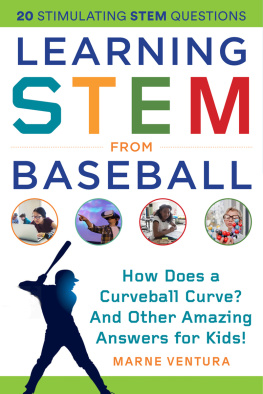

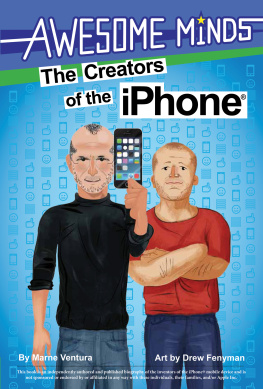




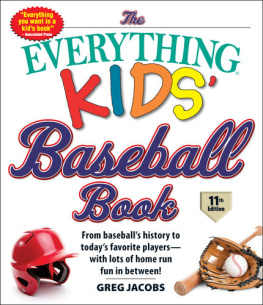
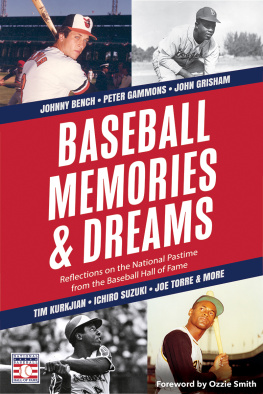
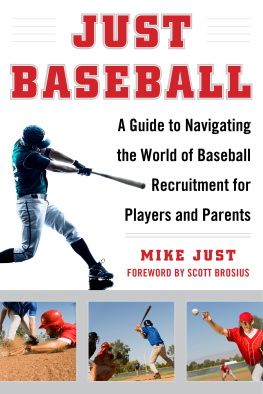


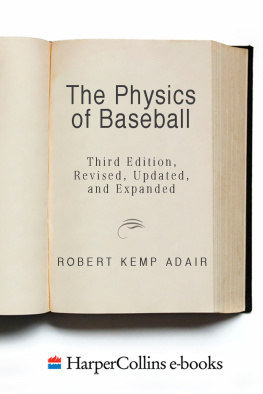
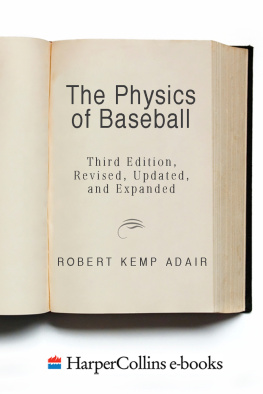

 Copyright 2020 by Marne Ventura All rights reserved. No part of this book may be reproduced in any manner without the express written consent of the publisher, except in the case of brief excerpts in critical reviews or articles. All inquiries should be addressed to Sky Pony Press, 307 West 36th Street, 11th Floor, New York, NY 10018. Sky Pony Press books may be purchased in bulk at special discounts for sales promotion, corporate gifts, fund-raising, or educational purposes. Special editions can also be created to specifi cations. For details, contact the Special Sales Department, Sky Pony Press, 307 West 36th Street, 11th Floor, New York, NY 10018 or .
Copyright 2020 by Marne Ventura All rights reserved. No part of this book may be reproduced in any manner without the express written consent of the publisher, except in the case of brief excerpts in critical reviews or articles. All inquiries should be addressed to Sky Pony Press, 307 West 36th Street, 11th Floor, New York, NY 10018. Sky Pony Press books may be purchased in bulk at special discounts for sales promotion, corporate gifts, fund-raising, or educational purposes. Special editions can also be created to specifi cations. For details, contact the Special Sales Department, Sky Pony Press, 307 West 36th Street, 11th Floor, New York, NY 10018 or . Table of Contents
Table of Contents  Introduction: Play Ball! Its a sunny day at the ballpark. Fans sit side-by-side on the bleachers. On the field, the bases are loaded.
Introduction: Play Ball! Its a sunny day at the ballpark. Fans sit side-by-side on the bleachers. On the field, the bases are loaded. Chapter One The Stunning Science Behind the Sport Why do pitchers wind up? Whats that crazy dance before the pitch? Why not just throw the ball? Pitchers want the ball to be difficult to hit.
Chapter One The Stunning Science Behind the Sport Why do pitchers wind up? Whats that crazy dance before the pitch? Why not just throw the ball? Pitchers want the ball to be difficult to hit.  How does a curveball curve? Pitchers can make baseballs move in surprising ways.
How does a curveball curve? Pitchers can make baseballs move in surprising ways. To throw a curveball, the pitcher snaps and turns his wrist. This gives the ball topspin as it flies through the air, which causes changes in the air molecules around it.
To throw a curveball, the pitcher snaps and turns his wrist. This gives the ball topspin as it flies through the air, which causes changes in the air molecules around it. Where is the sweet spot on a bat? The batter steps up to plate.
Where is the sweet spot on a bat? The batter steps up to plate. Exit Velocity The speed of a ball flying off the bat is called exit velocity . Yankees player Giancarlo Stanton broke the record for exit velocity when he hit a single off Red Sox pitcher Andrew Cashner in 2019. The ball was moving at 120.6 mph (194 km/h).
Exit Velocity The speed of a ball flying off the bat is called exit velocity . Yankees player Giancarlo Stanton broke the record for exit velocity when he hit a single off Red Sox pitcher Andrew Cashner in 2019. The ball was moving at 120.6 mph (194 km/h).  Who is Tommy John? Tommy John was a pitcher for the Los Angeles Dodgers.
Who is Tommy John? Tommy John was a pitcher for the Los Angeles Dodgers.